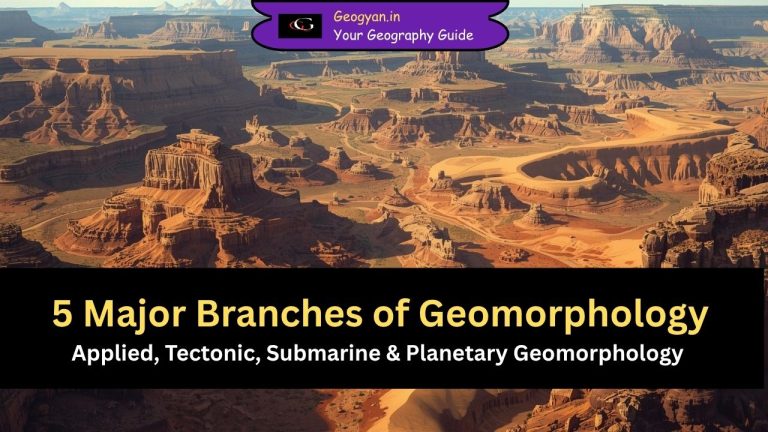Concept
Desertification refers to the extension of desert or desert like conditions into adjacent areas that is initiated by natural environmental change, by human degradation of marginal environments, or a combination of both. Most modern approaches to the definition of desertification recognize the combined impact of adverse climatic conditions and stress created by human activity. Both have been accepted by the United Nations as elements to be considered in any working definition of the process. The United Nations Environment Program (UNEP) tends to emphasize the importance of human influence on drought, but the relative importance of each of these elements remains highly controversial.
Desertification and its agents, deforestation, and erosion have been powerful shapers of human history. Agriculture had its roots in the once fertile crescent of the Middle East and the Mediterranean. However, deforestation, overgrazing, and poor agricultural practices have turned once-productive grasslands and farmland into the near-deserts of today. It is thought that deforestation and desertification may have even contributed to the collapse of the Greek and Roman empires. Similar fates may have befallen the Harappan civilization in the Indus Valley of India, the Maya civilization in Central America, and the Anasazi civilization in the Chaco Canyon in New Mexico in what is now a desert country.
Causes
The Extent of Desertification and Vulnerable Region
There must be many causes that together bring desert-like conditions to perhaps as much as 60,000 km2 of the Earth’s surface each year and threaten up to another 30 million km2. Areas adjacent to deserts and semi-deserts on all continents are directly at risk. Africa is currently receiving much attention, but large parts of the Middle East, the Central Asian republics of the former Soviet Union, China adjacent to the Gobi Desert, northwestern India, and Pakistan, along with parts of Australia and South America, and the United States are also prone to desertification. Even areas not normally considered at risk, such as southern Europe from Spain to Greece, are not immune. At least 50 million people in these regions are vulnerable to loss of life or livelihood.
Human Activities and Natural Factors Contributing to Desertification
Natural desertification is greatly accelerated by human activity, which makes soils vulnerable to erosion by wind and water. Drier grasslands with too little rainfall to support cultivated crops were traditionally used for livestock grazing. When semiarid land is overgrazed, plants that could survive moderate grazing are uprooted and destroyed. Because plant roots no longer bind the soil together, the exposed soil dries out and is blown away by wind as dust. The destruction and removal of topsoil means that soil productivity is drastically reduced.
In the Sahel region along the southern edge of the Sahara Desert, sedentary agriculture and overgrazing by livestock on fragile scrub has led to extensive soil erosion. The retention of larger herds during the early years of the Sahelian drought, for example, allowed vegetation to be girdled to such an extent that even plant roots died as the wind picked up exposed loose soil particles and carried them away, taking with it the land’s ability to support plant and animal life. Combined, these human and physical activities seemed to push the boundaries of the Sahara Desert inexorably southward. From this grew the image of shifting sands, which came to represent desertification in the popular imagination.
Other human factors leading to desertification include over-cultivation, deforestation, salinization of soil through irrigation and ploughing of marginal land. These destructive practices are amplified in developing countries by rapid population growth, high population density, poverty, and poor land management.
Climatic variability has contributed significantly to desertification in both the Sahel and the Great Plains and, in concert with human activity has created serious ecological problems. An alternative view sees human activity as capable of initiating desertification in the absence of increased aridity. For example, human intervention in areas where the balance of the environment is delicate may be enough to set in motion a series of events leading ultimately to desertification.
The introduction of arable land into areas more suitable for grazing or the removal of forest cover or opening agricultural land or providing firewood can upset the ecological balance to such an extent that the quality of the environment begins to decline, and if nothing else is done, the land becomes highly susceptible to erosion. In such cases, desertification is initiated by human activities with little or no contribution from nature.
Some areas on the Earth’s surface are marginal lands that can easily be converted to deserts when used for light grazing and crop production. In these areas, there is hardly enough rain to make the area more productive for vegetation than a desert and that is only if the soil is kept within a certain range of conditions.
Poor agricultural practices (e.g., not using contour ploughing or simply too much farming): overgrazing; the conversion of grassland to arable land in marginal areas where rainfall is insufficient to support crops in the long term: and poor forestry practices, including cutting down all trees in the marginal area for tree growth, has accelerated desertification.
Desertification can be caused by soil poisoning. Poisoning may result from the use of persistent pesticides or other toxic organic chemicals, or from industrial processes that lead to improper disposal of toxic chemicals. Acidification of air pollutants, over-fertilization in feedlots, and oil or chemical spills can all lead to soil degradation, forcing the abandonment or reduction of agricultural land use. Globally, chemical degradation accounts for about 12% of all soil degradation.
Irrigation of soils in arid areas can also lead to the desert. When irrigation water evaporates a residue of salt is left behind. Although these may have been in very low concentrations in the irrigation water, over time the salts can build up in the soil to the point at which they become toxic. This effect can sometimes be reversed if irrigation is increased greatly, the larger volume of water then redissolves the salts and carries with it as it percolates down into the water table.
Major Symptoms of Desertification
- Lowering of the water table (wells must be dug deeper and deeper);
- Increase in the salt content of the soil;
- Reduced surface water (streams and ponds dry up):
- Increased soil erosion (the dry soil, losing its organic matter, begins to blow away and be washed away in heavy rains); and
- Loss of natural native vegetation (not adapted to desert conditions, native vegetation can no longer survive).
Impact of Desertification
i) It contributes to the loss of global biodiversity, especially in areas that are the center of origin of the world’s major crop species such as wheat, barley, sorghum, maize, etc.
ii) It contributes to the loss of biomass and biological productivity of the planet and to the depletion of global humus reserves, disrupting normal bio-geochemical turnover and reducing the global sink of carbon dioxide.
iii) It contributes to global climate change by increasing land surface and decreasing the actual rate of evapotranspiration, changing the energy budget of the Earth’s surface and adjacent surface air temperature, and adding dust and carbon dioxide to the atmosphere.
iv) It is a major cause and mechanism of global loss of productive land resources, thus reducing the world’s ability to provide enough food and shelter for a growing population, thereby contributing to the spread of poverty and hunger.
v) Cause economic instability and political unrest in affected areas as people struggle to survive with limited land and water resources and are often forced to migrate in search of aid and shelter.
vi) It brings pressures on the economy and stability of societies immediately outside the area affected by desertification by escalating the need for food and air and contributing to the influx of environmental refugees, etc. During a drought, there is a natural tendency among people to hope that it will be short and of limited intensity.
Residents of drought-prone areas may not react immediately to increased aridity. They may continue to grow the same crops, perhaps even increasing the area under cultivation to compensate for reduced yields, or they may try to maintain the flocks and herds that have expanded during times of plenty. If drought persists on arable land, crops die, and bare land is exposed to the ravages of soil erosion. This is how Dustbowl in the Great Plains evolved. As the available moisture evaporated, the plants died and the wind removed topsoil—the most fertile part of the soil profile, leaving a barren landscape that even the hardiest desert plants found difficulty to colonize.
Preventions
Preventing desertification begins with monitoring these factors. Monitoring of aquifers and soils is an important activity in marginal agricultural lands. When undesirable changes are observed, activities producing these changes can be stopped, reduced, or changed.
Proper methods of soil conservation, forest management, and irrigation can help prevent the spread of deserts for a background discussion of soil and farming and Irrigation practices), Good soil conservation includes the use of windbreaks and narrow lines of trees that help slow the wind to prevent sandstorms and ad erosion of the soil. A landscape with trees is a landscape with a good chance of avoiding desertification. Practices that lead to deforestation in marginal areas should be avoided. Reforestation, including the planting of windbreaks, should be encouraged.
The light against desertification has been marked by a distinct lack of success Recent reassessments of the problem, beginning in the late 1980s suggest that this may be the result of the misinterpretation of the evidence and a poor understanding of the mechanisms that cause and sustain the degradation of the land. The additional research required to resolve that situation will further slow direct action against desertification, but it may be the price that has to be paid to ensure future success.
Summary of actions required for the prevention and reversal of desertification is as follows:
- Good land-use planning and management: (For example: cultivation only where and when precipitation is adequate animal population based on the carrying capacity of land in driest years and maintenance of woodland where possible)
- Irrigation appropriately managed to minimize sedimentation, salinization, and waterlogging.
- Plant breeding for increased drought resistance
- Improved long-range drought forecasting.
- Weather modification: (For example: artificial rain, snowpack augmentation)
- Social, cultural, and economic controls: (For example: population planning, planned regional economic development education)
- Prevention of further soil erosion: (For example: by contour ploughing, gully infilling, planting, or constructing windbreaks)
- Reforestation
- Improved water use: (For example: storage of runoff, well-managed irrigation)
- Stabilization of moving sand: (For example: using matting, re-establishment of plant cover, using all waste mulches and polymer coating)
- Social, cultural, and economic controls (For example: reduction of grazing animal herd size, population resettlement)
You May Also Like





























